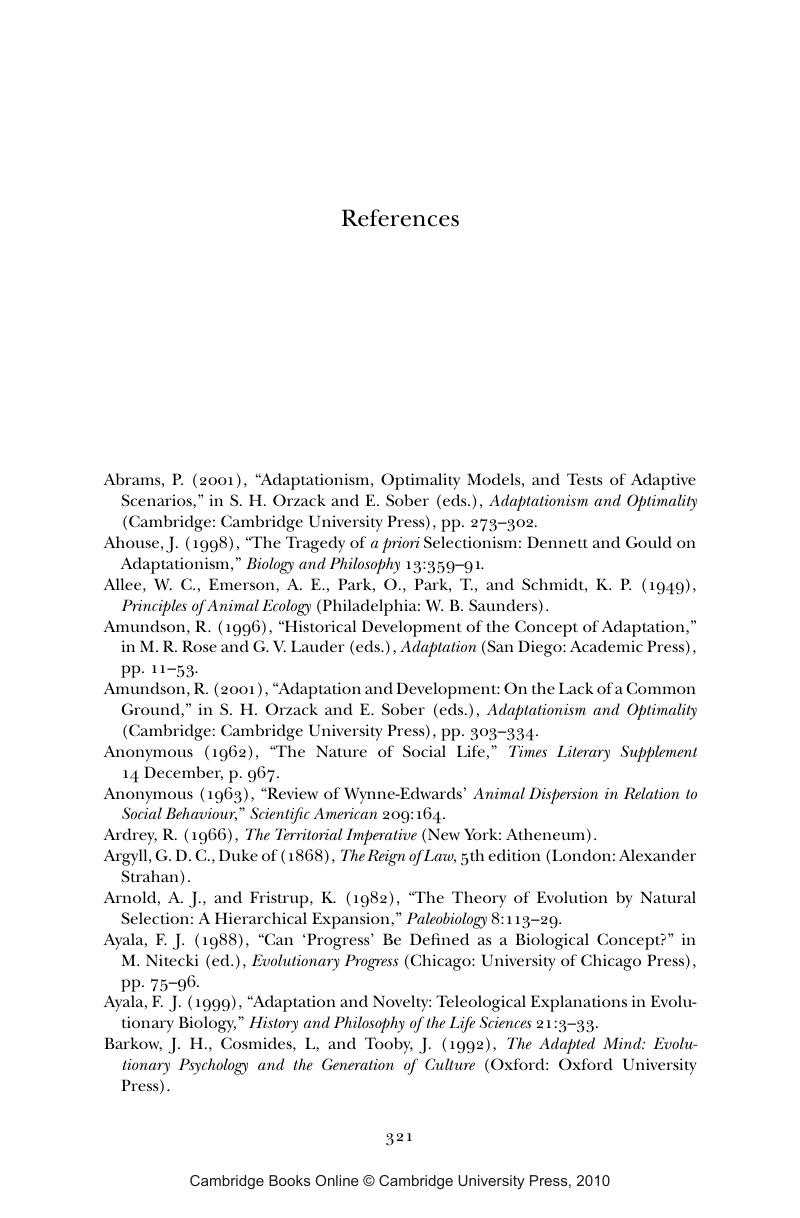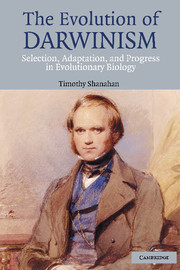References
Published online by Cambridge University Press: 18 December 2009
Summary

- Type
- Chapter
- Information
- The Evolution of DarwinismSelection, Adaptation and Progress in Evolutionary Biology, pp. 321 - 338Publisher: Cambridge University PressPrint publication year: 2004



